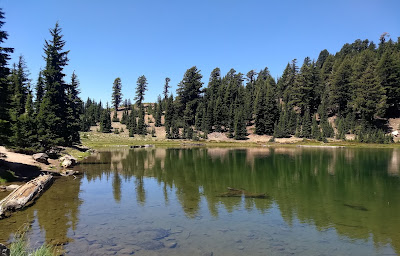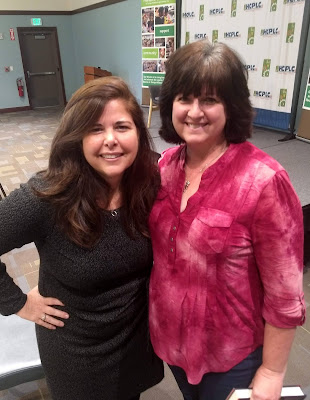.JPG) |
| From Fort Casey State Park--Mt. Rainier in the distance |
I’m still sorting through the notes, photos, and impressions of my recent trip to California and Washington. I’ve always embraced the simple pleasure of anticipation, but I’m still figuring out how to savor and extend the good memories of experiences like travel once I return home. I mostly just dive back into everyday life and all its attendant activities without taking time to savor my trip. It’s a work in progress!
Before everything becomes one confused blur, I thought I’d share
just one day’s explorations while I was in Washington.
Whidbey Island
I went to the Seattle area to visit my wonderful friend Kerri.
Kerri is the best tour guide, though you’d better wear comfortable shoes
if you want to keep up with her. For example, on the day in question, we took a
brief ferry ride to Whidbey Island where we visited:
The town of Langley
Admiralty Head Lighthouse at Fort Casey State Park
I know, right? My pedometer only logged a bit over
11,000 steps that day.
It would take me thousands of words to record all that we
saw and experienced just that one day, so I’m just going to hit a few highlights.
We started the morning in the charming little town of Langley. We checked out the whale bell (“Spy a whale, ring the bell”) and a few of the shops, where I saw a number of tempting purchases that I would have made, except I was saving room in my suitcase for our next destination.
 |
| The whale bell at Langley |
 |
| Steps to the beach |
I’ve been dying to go to the Chocolate Flower Farm, where they specialize in dark maroon colored plants and those that smell like chocolate (their most popular plant is a chocolate cosmos). They also sell products like raspberry and chocolate jam, chocolate candles, and cocoa butter-based body products (that make you smell like chocolate). We were too early in the season for the chocolate plants, but it was still a beautiful place to visit, and I stocked up on the items I knew I wanted to bring home with me.
 |
| Chocolate Flower Farm residents |
Kerri had never been to Meerkerk Gardens before, so we spent some time exploring the walking trails, and sitting beside a pond listening for birds. Once we were away from the entrance, we saw few people—just birds, salamanders, rabbits, and one very startled deer.
We were almost through with our day by the time we got to Fort Casey State Park and Admiralty Head Lighthouse. We were just in time to get photos of a ferry approaching, with Mt. Rainier in the background (see photo at the top of this post).
.jpg) |
| We followed this trail... |
 |
| To this view |
Exploring new places, especially those as beautiful as
Whidbey Island, is one of my favorite simple pleasures. And while the climate
in Washington is much more comfortable than the climate here in Florida, I can’t
help wondering what beautiful places I’m missing here because the humidity and
heat keep me indoors. It’ll be a few months before I’m ready to spend any time
outside that I don’t have to spend—but I’d like to make time to do more
exploring. Between Covid and caregiving (and maybe the teensiest bit of
laziness), I’ve spent more time in my home over the past two and a half years than
anyplace else. And while I love being at home, I’m ready for some outside
stimulation.
Have you had any summer adventures lately? Do share in the
comments below!

.JPG)
.JPG)
.JPG)
.jpg)
.JPG)














































.jpg)


